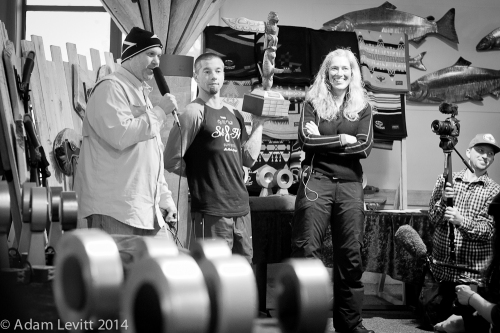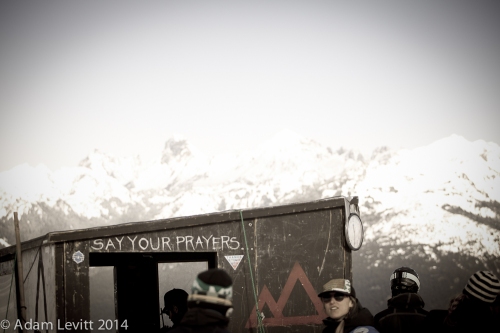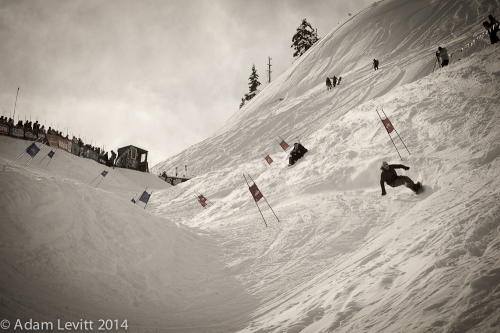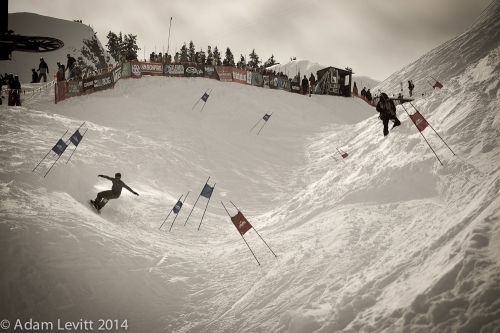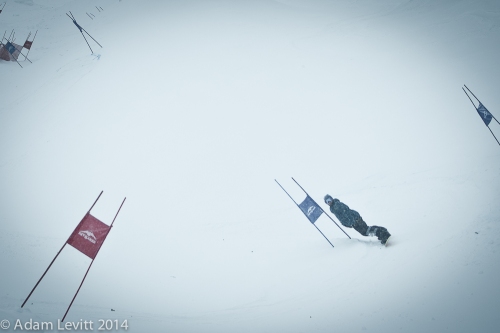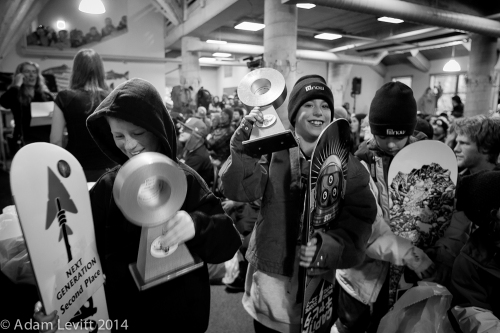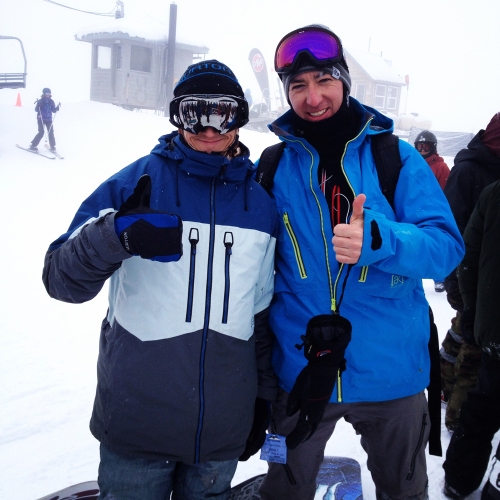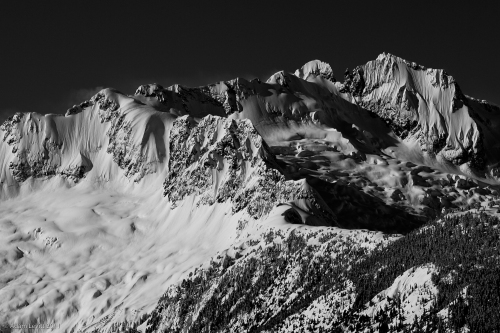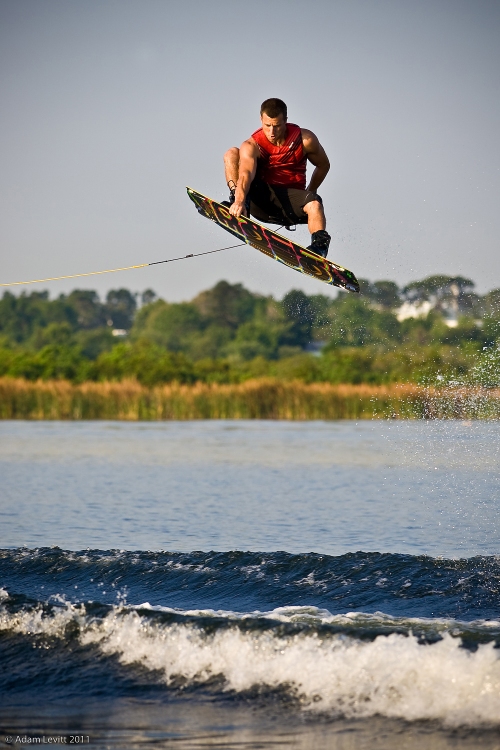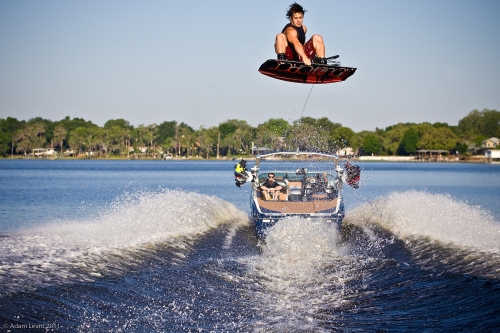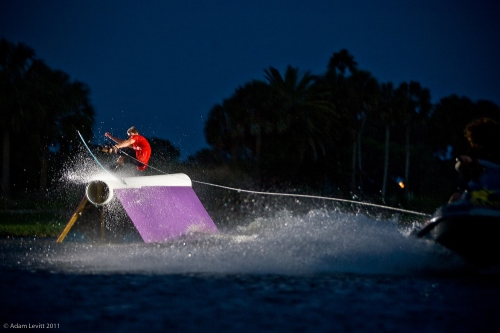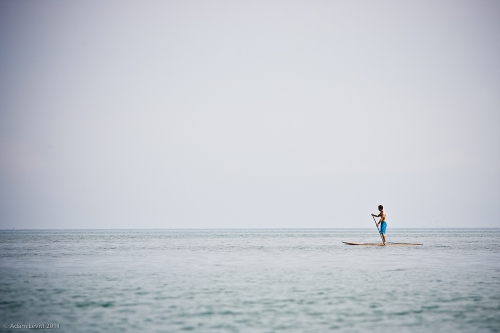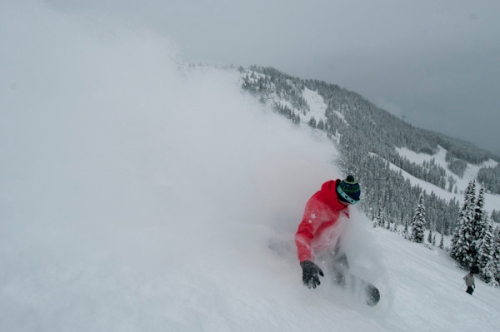
Taken from SBC Wakeboard Magazine, Volume 12, Issue 2
You’re never going to see Pat Panakos on any podiums, or see his name in magazines or feature wake films very often, but if you don’t know who he is, shame on you. Pat is one of the greatest behind-the-scenes heros this sport has ever known. His tireless contributions over the 15 years he’s been involved in the business have helped to shape the past, present and future of the sport. In fact, without his influence it’s safe to say the sport of wakeboarding and wakeskating would look a lot different than what it is today. I sat down with Pat for an exclusive four-hour interview and could have filled up 20 pages worth of material his story is so deep. If there’s one article you’re going to read in this entire issue, please make it this one.
The Early Days
Pat’s wakeboarding career started when he was going to college in Gainesville, Fla., 1994. Having already surfed and skated, he was introduced to the sport by Bruce Clem, who helped run the school’s waterski program. Pat had never skied before and once he figured it out he kept going back everyday. He became good friends with Clem and six months later they both went to the U.S. Nationals where Pat placed sixth, earning a spot at Worlds. The trip to Nationals proved important for another reason. That’s where Pat first met Scott Byerly. Byerly invited Pat to come ride with him and that would be the start of a friendship that still stands.
A month later, Pat would make the trip to Worlds, where he placed ninth out of a 10-man field. The weekend was more productive than he could have imagined because he was offered a spot on the O’Brien pro team, joining riders such as Russ Wilde, Doug Homan and a young Randall Harris. The spot on the team offered the opportunity for Pat to travel and get to ride with a lot of good riders. Still living in Gainesville, Pat moved down to Orlando, where an established scene offered him the chance to gain more exposure. Clem bought a house in Chuluota, on the northeast side of Orlando, and Pat and Steve Wahlman moved in. This was a hotspot of wakeboard progression at the time; Pat kept his boat at Gator’s house on Lake Pickett, where the sport was getting redefined day by day. The Lake Pickett crew consisted of Pat, Clem, Wahlman, Gator, Byerly, Buster Lutgert, Brandon Meek, Matt Staker, Chase Heavener and a few others.
“It was just an amazing time,” Pat says. “I had Byerly in my backyard, I had Thomas Horrell as a good friend, I was living with Wahlman, and he’s a guy who should get way more credit than he was ever given. I had the most amazing wakeboarders surrounding me and pushing me; it was the best atmosphere to be in.”
As the Pickett crew kept progressing, they started to build basic rails consisting on large PVC pipes and sessioned them daily. At the time, all of the wakeboard contests were sticking to a trick-ski-like format and there were definitely no rails. The Picket crew grew bored of this format quickly. One day Pat was sitting on the dock watching Byerly hit all the rails on Lake Pickett and came up with the idea of a rail-only contest. The original plan was to hold the contest at Staker’s parents’ house until they learned of a property out in Bithlo that was being used by Dave Goode as a waterski camp and testing facility. The property had three private lakes, a perfect fit for the contest. Pat approached Goode about using the lakes for the contest, and Goode was completely cool with the idea, not asking for rent, any form of payment or any proof of insurance. The Pickett crew set up in the middle of the property and built nine different rails that would go in two of the three lakes. And on April 20, 1999 (Byerly’s birthday), the first rail-only contest, known as The Carnival, went down. Byerly took home the belt, and it turned out to be a pivotal point in the sport as everybody took notice, including some Pro Tour organizers.
“I remember having the suits come out from the Pro Tour to check out what we were doing,” recalls Pat. “They were asking how they could get rails in the Pro Tour, and they were really excited about the possibilities. They were really trying to understand the logistics, but at the time I didn’t really understand what they were asking me because here are these business-savvy guys who have run a successful tour for years and they’re asking a guy like me for advice. I was getting a little bit upset because I was thinking, ‘You build the rails, you put them in the water, and you let us hit them; that’s what we did!’
“The next year they had them in the tour but they called them sliders, which was the worst name ever. It’s just another made-up term that we have in our sport; it doesn’t make sense to me. I don’t know what a slider is; I know what rails are, I know what kickers are, I know what features are. Do you slide on a slider? Is it slippery?”

After The Carnival ended, all of the rails were moved into the third lake and the crew came back day after day to keep riding. The original agreement with Goode was to remove the rails from the lake, but because they were so big, it would take some time. Staker suggested to Pat that he should keep the rails in the water and open up a rail park. Pat approached Goode about renting the third lake with some money he’d saved up from working construction, and The Projects was born in August 1999.
“I knew absolutely nothing about running a camp,” Pat admits. “It was a huge learning experience, and it took a toll financially because I found out really quickly that at the time not many people cared or even knew about hitting rails. It was basically me and my friends, and that doesn’t make any money. I realized I needed a boat so I could combine wake and rails and introduce people that way. And once we got going, I was doing everything—coaching, cooking, cleaning, airport pick-ups, reservations. It was rough.”
When the camp got busier, Byerly would come out to the camp and lend his time for free. Eventually the two became business partners in the camp, and it flourished. The Projects eventually started to make money, but to this day Pat and Byerly have never taken a paycheque; all profits get invested back into the camp. Obviously The Projects has become one of the most famous wakeboard locations in the world; you can’t open a wakeboard magazine, watch a video or visit a wake website without finding footage shot there.
Building Wakestock
Pat’s involvement in Wakestock started back in 1999, when the event was hosted in Bala, Ont. After The Carnival took place, Pat received a call from Bryan Gardner, then technical director for Wakestock and editor of SBC Wakeboard. Gardner wanted to put rails in at Wakestock and was asking Pat for advice on how to make it happen. Pat ended up shipping up three of the rails from The Carnival to Wakestock and flew up to Canada to build a few more rails at the time of the event. Pat’s role in Wakestock increased significantly when the event changed locations to Wasaga Beach, Ont. The event site at Wasaga offered sandy shoreline, allowing for rails to be posted in the ground. Pat had learned the art of posting rails underwater when he worked for a dock builder in Orlando and planned out one of the best rail courses ever seen.
“One of the things I like about Wakestock is they leave the design completely up to me,” Pat says. “The guidelines they gave me are, ‘Make it challenging for the pros, and make it so it will be a good show.’ The first year we went in and set a course in a couple of days with my crew from The Projects and a bunch of local carpenters. We had such a system down of getting that course built. I would blow in the posts and braces and set a chalk line of the rail profile. Once we were done, guys like Joe Karchemny and Wes Browne would build the frame of the rail. When they were done, there was another crew behind them that would put up the plywood sheeting; it was basically a rail factory. And the rail course was one of the things Wakestock became famous for. Every year they told me do something bigger, do something better.”
When Wakestock shifted to Toronto Island, Pat continued to design and build the on-water rail courses, but he would also tackle the biggest build project in his career. As winch jams were becoming increasingly popular, Oakley had stepped in as a major sponsor of Wakestock and wanted to have a pool jam that would put all others to shame. The Oakley Pool would go through several incarnations, and Pat was the guy supplying the design and hours of hard manual labour for every one.
Pat went up to Toronto months before the event to design the pools and meet with fabrication companies. He gave them the designs for the pool, but because it was on the City of Toronto public property it had to go through an engineer first. “It was the first time I’d ever worked with steel, worked with CAD drawings or dealt with engineers,” Pat says. “It was a completely different ball game. Those pools are so big and there was so much money invested in them that nothing could go wrong, and I was worried about it; these things were the biggest pool jams ever built. I did a lot of R and D at The Projects beforehand with rail angles, and when it came time to building the pools I felt 100 per cent confident. Wakestock essentially threw me into the pool jam world.”
Pat had done pool stunts out at The Projects before, but this was serious. “You had thousands of people watching, so everything had to be planned out and it had to be safe,” he says. “Wakestock is the one event that taught me about safety. Truth be told, the stuff we built was overkill, but it taught me the lesson that you have to do that for commercial use.”
A New Culture
Pat was busy in 2007 with The Projects going full steam ahead, building everything for Wakestock, doing a few pool jams at boat shows around the U.S. and starting up his own rail fabrication company, aBox. Pat received a call from Danielle Crawford at the World Wakeboard Association (WWA) offering him an all-expenses-paid trip to check out a cable park contest in the Philippines. Up until that point, all of his experiences with cable parks were nothing special. He was hesitant to fly halfway around the world to some cable park he’d never heard of. It turned out that Byerly, Keith Lidberg and Brian Grubb were invited along, so Pat decided to check it out. That turned out to be one of the best career decisions he would ever make.
CamSur Watersports Complex (CWC) is located just outside of Naga City, which could easily be considered a developing part of the world, so arriving there was total culture shock to Pat. He would get even more of a shock the first time he rode the cable; he’d never experienced anything like it when he rode at cables back home. Immediately his eyes were opened about the possibilities of cable parks and his mind was racing. Coincidently, Christian Von Lerchenfeld, owner of Sesitec and manufacturer of the cable system for the park, was there as well. Pat tracked him down.
“I had to tell this guy that’s he’s changed my life and my perception of the sport,” Pat says. “I couldn’t sleep from what I experienced the day before the first time around the cable. The first time we met the only thing I could say was, ‘Thank you for building this park. I’m so pumped.’ We didn’t really talk for very long; I think he was more interested in meeting Byerly. Later that day he came back to me with the Sesitec obstacle brochure and I was blown away. They were awesome: all aluminum frames, stainless bolts, HDPE surfaced, full commercial designs. All I could think was, ‘Who are you, and why have you been hiding in Europe all this time?’ ”
Toward the end of the trip the real reason Pat had been invited to CWC was finally revealed. He was introduced to LRay Villafuerte, the governor of the province and owner of CWC; LRay told Pat that he wanted to make CWC the best wakeboard destination in the world and he needed his help.
“To me, he already had the best cable park in the world,” Pat says. “He wanted all new obstacles in the cable park. He wanted me to design a boat lake, and he wanted an 18-hole winch course. The first day I got there my perception of cable parks had completely changed, and now I had him asking me to make the best cable in the world even better. It was basically the dream job of a lifetime.”

Pat and LRay would sign a five-year deal a few months later when LRay flew from the Philippines to Toronto to meet up with Pat at Wakestock. With the deal signed, ideas immediately began flooding into Pat’s head. He was excited about trying to recreate a little piece of The Projects boat lake at CWC. But one big question was brewing in Pat’s mind when it came to making the winch park work efficiently. It didn’t have to do with the design but more to do with the winches. Winches work great, but if you’re trying to run numbers through a park as a business they’re really slow; it takes you five minutes to walk the rope back for a 30-second ride. There’s also no speed control, so each customer is going to get a different pull. Pat had a growing list of concerns about using winches but no real answers. Without a clear solution, LRay told Pat to order 18 Grinch winches for CWC, but a few weeks later Pat would find not only the answer to his question but discover a whole new system that would, once again, change the sport of wakeboarding forever.
A New System
With Pat’s perception of cable so radically changed after his first visit to CWC, he really wanted to start bringing more cable parks to North America. He had so many ideas running through his mind and decided he wanted to build cable parks, but he wasn’t sure which direction to turn. Former Wakeboarding Magazine editor Matt Hickman had been looking to get the North American distribution rights for Sesitec and needed a partner. Pat and Hickman met with Von Lerchenfeld at Surf Expo in 2007 to sign the deal. With the deal in place, Pat posed his winch park problem to Von Lerchenfeld, and a few months later Pat had his answer. It didn’t come in the form of in winches, however, but in cables. At a meeting in October, Von Lerchenfeld pulled out a picture from a straightline cable system he invented for a waterski show in Germany back in 1993.
“I looked at him and I was so stoked, but I wanted to choke him,” Pat admits. “I was thinking, ‘You’ve kept this from us the whole time?’ I needed something like this back in 1994 when I started wakeboarding.”
The pair sat down for the next seven months, throwing ideas back and forth and ultimately came up with what the System 2.0 is today. “I had so many other ideas than the winch park problem, and the System 2.0 solved everything,” Pat says. “I was so excited, but we didn’t tell anybody about it. We brought in front of LRay and explained we wanted to do straightline cables instead of winches, and he understood immediately.”
Engineering and fabrication took several months, and the first prototype was finally finished in the spring of 2008. Pat and Hickman flew to Germany to test it out at one of Von Lerchenfeld’s cable parks south of Munich. When the System 2.0 was first designed, it was engineered to pull the rider in a straight line, stop, then pull them back again. Pat and Hickman arrived at the cable park thinking this would be how it worked. Von Lerchenfeld had been running the System for a few days previous to their visit, and one of his sons figured out that by cutting away from the cable you could keep enough speed when the pulley stopped and reversed, allowing to ride continuously.
“They were telling me about it when I was on the dock waiting to go, and I was thinking it sounded crazy,” Pat says. “I was couldn’t understand how it was possible. It’s a straight cable. They told me not to worry about it; all I had to do was edge out and stay on my heels. I just thought it couldn’t be that simple. It doesn’t look that simple. They pulled me off the dock. It was really cool, as silent as can be. I edged out on my heels, they flipped the direction of the cable, and I turned around and I completely tripped out. I had perma-grin for 10 laps going back and forth. I was laughing out loud riding that day; it was the most amazing thing I’ve ever experienced.”
The System 2.0 would make its official debut a few months earlier at the Oakley Wakeskate Pool Jam at Wakestock on Toronto Island, and it worked perfectly. The cable ran perpendicular to the boat course and would pull riders across the water when there was a break in the action.
“I had a great time riding, but then all of the possibilities with this system start filling my head,” Pat says. “Every rail and obstacle I had thought about building up to that point, forget about it; now there’s like a thousand more designs I could build. Now it would be possible to ride a halfpipe or quarterpipe with the handle in our hands instead of getting whipped in. We left Germany, and the hardest thing was we couldn’t tell anybody about it.”
A Blank Cheque
A few months previous to the first test run on the System 2.0, Pat had met with Sean Dishman, Ryan Lamos, Parks Bonifay and Michael Ladining from Red Bull. They were playing around with a concept of building a skateboard/snowboard-style wake park on Lake Eola in the middle of downtown Orlando. They were thinking of building large features with elevated pools and rails and the event could be pulled by PWC; they wanted the Red Bull riders to provide the design and Pat to build it. Upon looking at the original plans, Pat starting doing the cost estimates and it was becoming expensive. In one of the original plans the park was circular so you could hit it from all different angles; the only problem was the riders would be limited by the PWC and the rope. At this stage in the planning, Pat had just returned home from the first System 2.0 test and he knew what was now possible. He called Lamos to convince him to let him take over the design. The problem was, he couldn’t tell Lamos why. It got to the point where Pat had to reveal the secret of the System 2.0 so they could understand what was going on. It turns out the final product of the Red Bull Wake Lab was only a third of the original design.
The Wake Lab would be the toughest design and build Pat had faced in his career. They had to rethink the process because of transportation issues; the whole thing is modular and breaks down into small pieces. The other huge issue was time; realistically they should have started in March, but didn’t get underway until early August, six weeks away from the contest date. Because he runs a small business, Pat couldn’t buy all of the materials on credit, so he had to wait to get a cheque from Red Bull to begin. That’s where the craziness of the Red Bull Wake Lab started.

“The panic phone calls starting happening at that point, “says Pat. “I called Lamos and told him that if I didn’t get the cheque that week, the event wasn’t going to happen because I wouldn’t have any time. They had someone fly with a blank cheque overnight to the Red Bull head office in Austria to get it signed by the president of the company and then fly right back. Because my bank would have put a 14-day hold on such a large amount, I had an open-ended ticket to Texas, which is where the closest bank that Red Bull does business with is. But there was a problem with the cheque, so I called Lamos again and told him that if they had to fly back to Austria again, we’d be out of time. I told him he had to wire it directly to my account, and for the first time in the history of Red Bull they wire transferred $250,000 to my account. I’ve never seen a company go after something like this. They basically put all of their jobs on the line for this event.”
Work began at a furious pace. Four welders, a steel cutter, up to 15 people on the fabrication shop working 18 hours a day. The first two days for 48 hours straight they did time trials for cutting steel and discovered at the pace they were going, they would finish two weeks after the event date. They called every steel cutter in the area, but their prices were through the roof. Pat found a local company, Orlando Fabrications, and begged them for help. He brought his water jet steel cutter to The Projects and saved the day. Another problem was when they went to get the foam blown into the sections so the whole setup would float. They thought they could make four trips a day with a full load, but it turned out they could only make one. The guy who was doing the foam moved his operation to The Projects as well. His regular job was blowing foam for Nautiques, and he stopped what he what doing to help Pat out.
For six weeks Pat’s crew worked at a hectic pace nearly round the clock to get it finished. The CAD work wasn’t finished until the day of the event and metal handrails were still being fabricated three hours before the event started. The frenetic pace started to take its toll on the crew as some of them began to suffer breakdowns from the long hours. It got to the point of being dangerous because everyone was pushing themselves so hard.
“I had to scuba dive underneath the structure in order to put the bolts in to hold it together,” Pat says. “It was really dark under there, and if I opened my eyes and looked really hard, I could kind of see what I was doing. But that took too much energy, so I was feeling my way along with my eyes closed. I’m doing this at one in the morning one night, and I’m conserving energy keeping my eyes closed; the next thing I realize, I wake up on the bottom of the lake with the regulator still in my mouth. I’d fallen asleep underwater. I freaked out, and my adrenaline shot me to the surface. That’s how hard we were working. It was stupid.”
Thousands of people showed up to watch the event that night, but Pat was so tired that he saw Parks Bonifay hit it once and went home to bed. Little did they all know of the blood, sweat and tears (literally) that went into building it.
Going Forward
With the publicity and success of the Red Bull Wake Lab, the System 2.0 is gaining fans by the day. Pat is now installing them across North America. He has plans to install two full cable systems this summer as well. The Projects is going through big changes this summer as it merges with Shaun Murray and Travis Moye from The Boarding School. Murray and Moye will be taking over camp operations and the boat sessions while The Projects crew will run the rail park and System 2.0 setup. This combination makes them the best wake camp in North America.
Pat has been in the industry for over 15 years and has had a hand in some of the most groundbreaking moments in the history of the sport. Somehow he’s remained completely humble through all of it and lives each day for the love of the sport. He’s not kicking it in a million-dollar mansion, but stills lives out of his trailer at The Projects.

“I always had dreams just like everybody else,” Pat explains. “I wanted a big house on the lake, I wanted to drive a cool car, but spending a lot of time in the Philippines made me thankful for everything I have. The majority of the people over there are so poor; they don’t have shoes, some of them don’t have roofs on their tin-shack houses, but they’re smiling, they’re happy, and they offer me their food. That trailer I live in at The Projects is like a five-star resort over there. Everyone here cares about money and possessions, and they want everything now, now, now; to me it doesn’t make sense anymore. Of course I have a little baby girl on the way and my wife I want to provide for. But do I need anything? No. I feel extremely lucky for everything that I have and everything I’ve done.”

